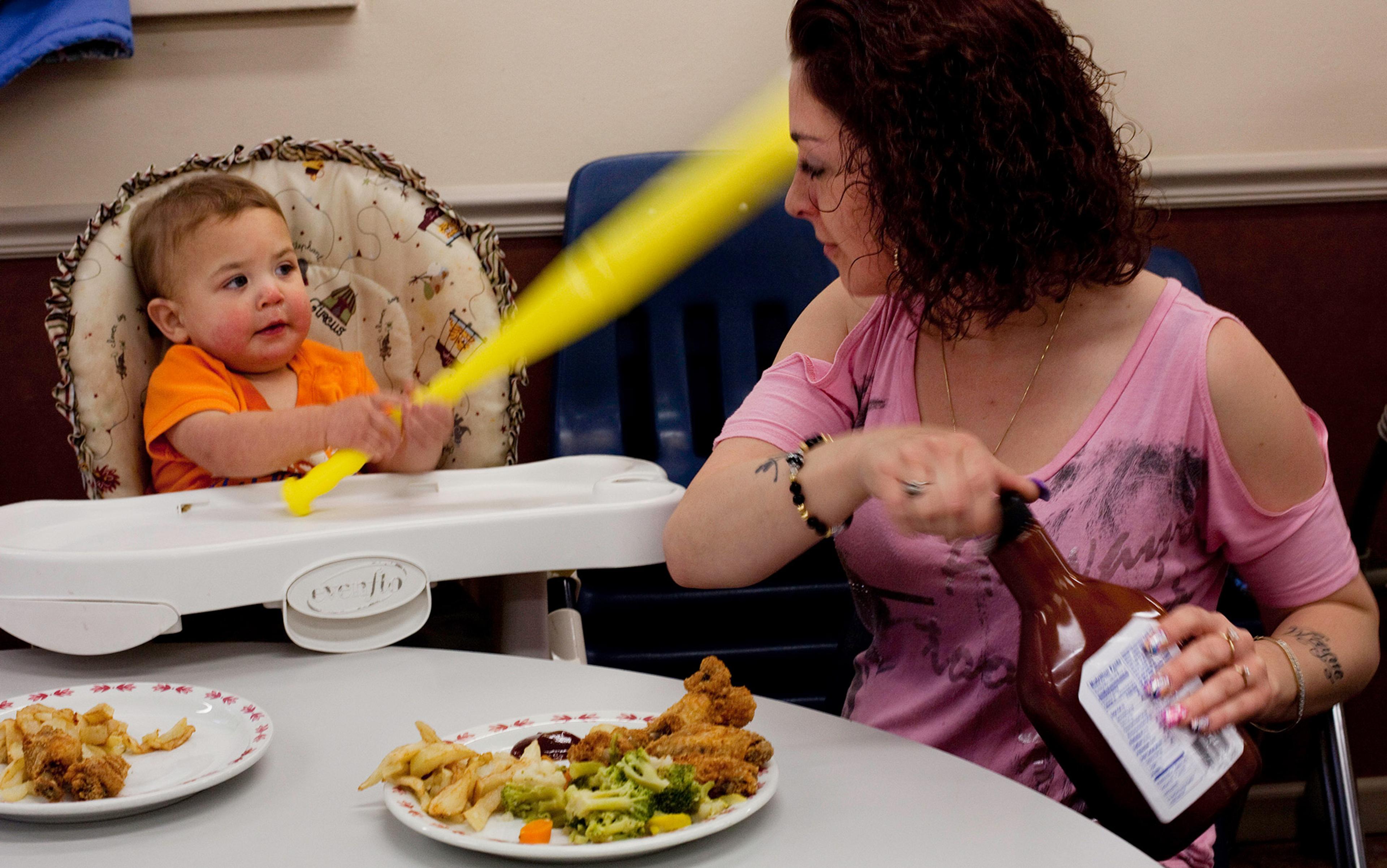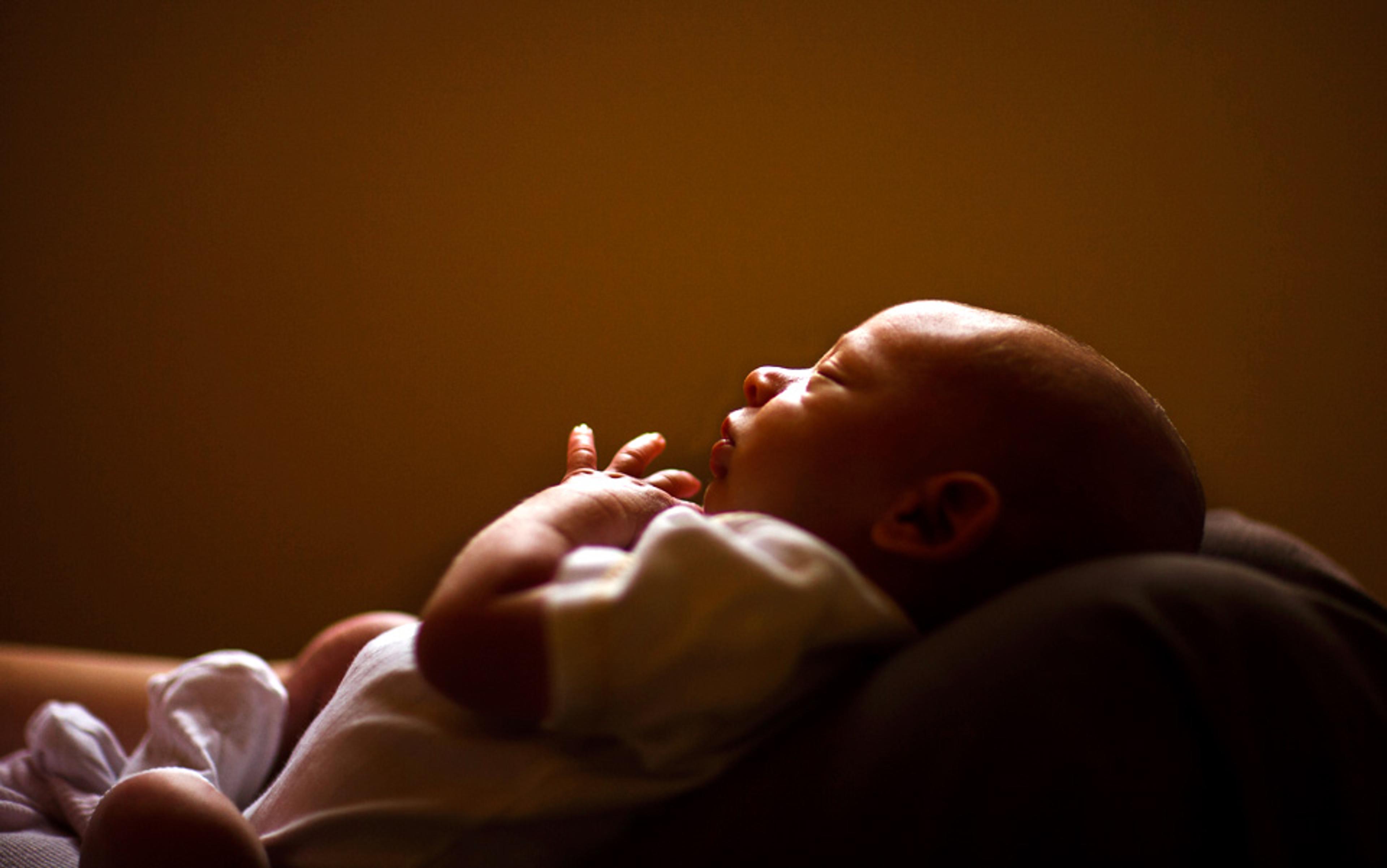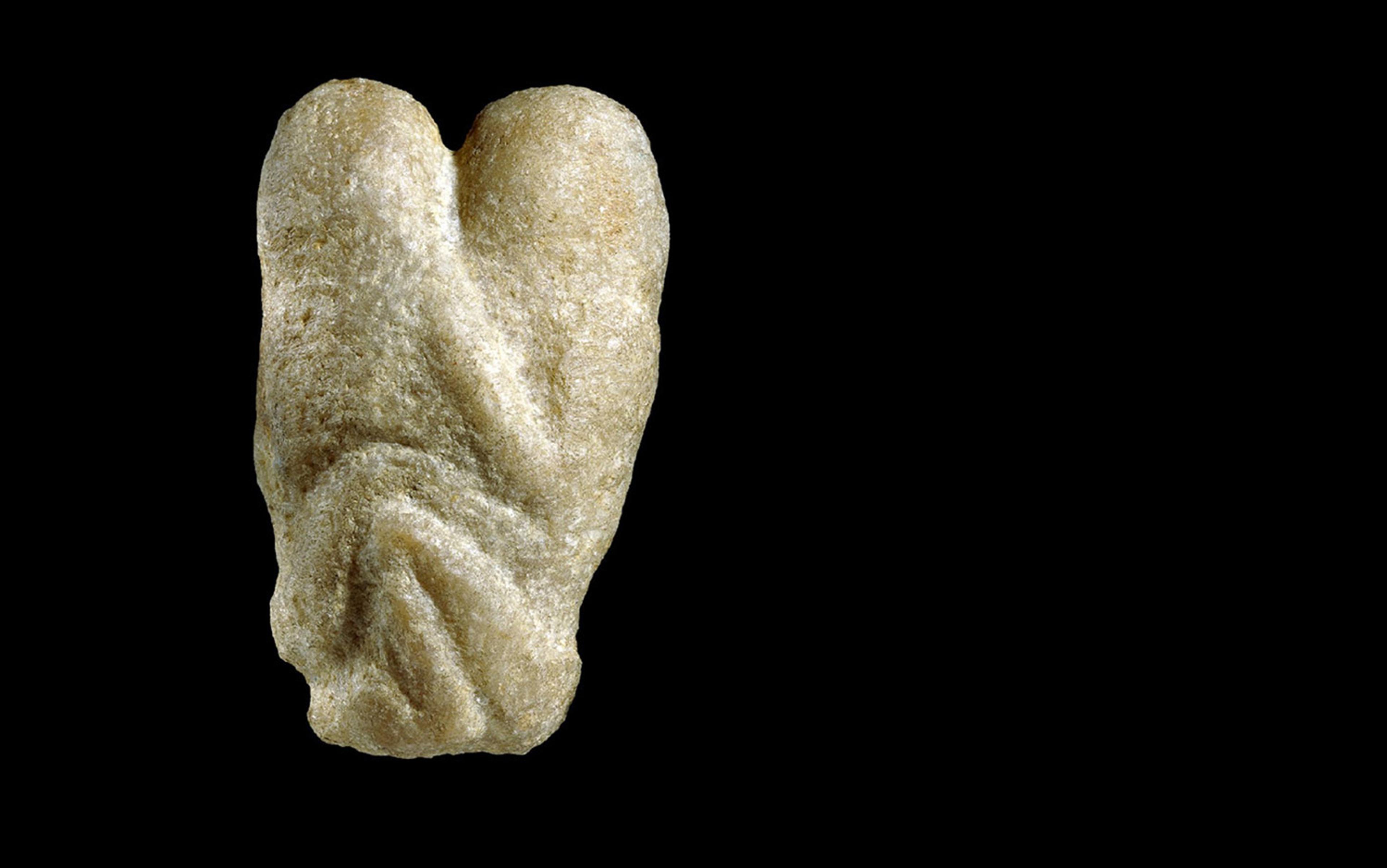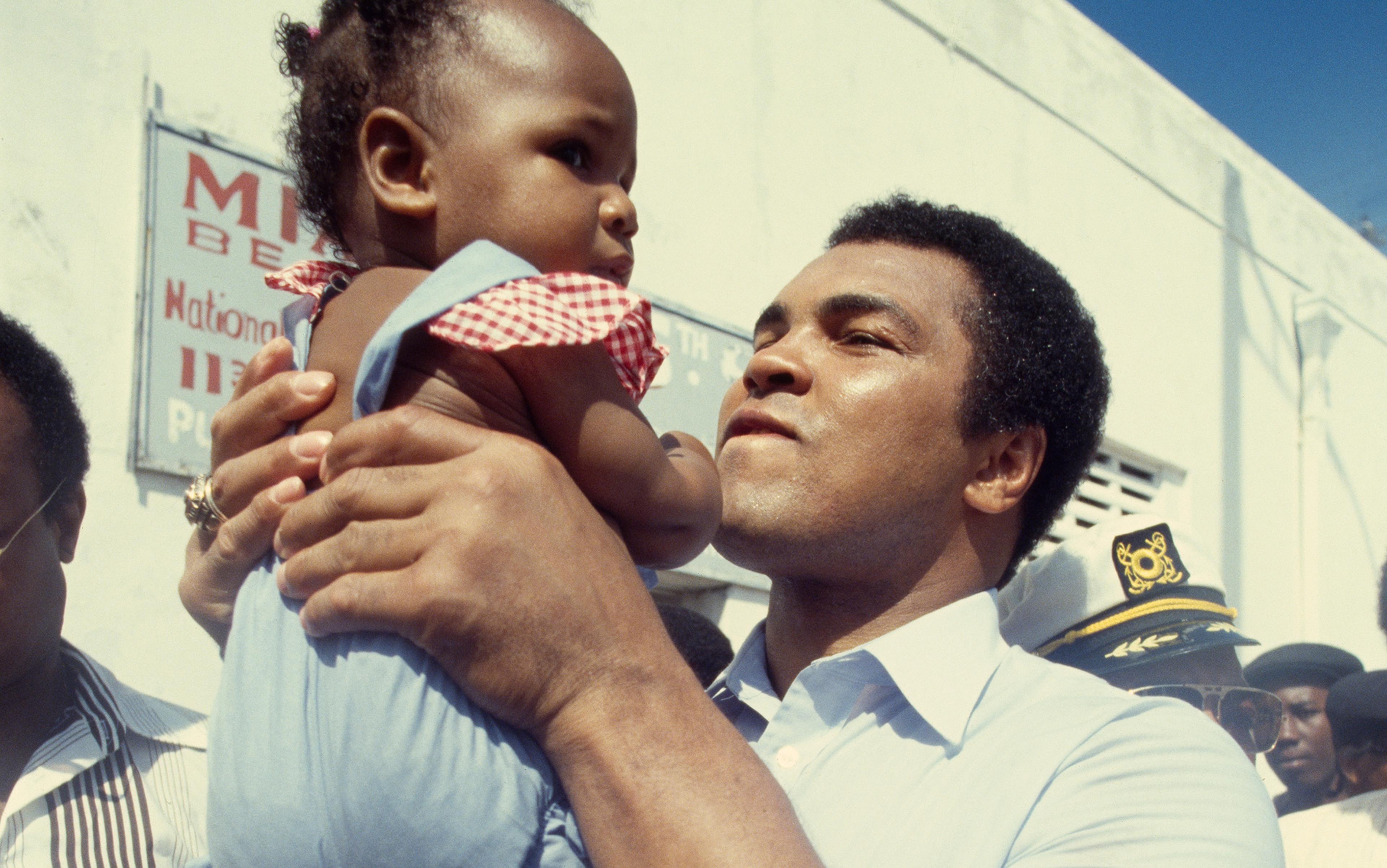Humans would not be here but for pregnancy and childbirth. It is true for each of us and, more importantly, true for all of us, collectively. These uncomfortable, protracted and wonderful challenges not only shepherd us into the world, but also shape our behaviour, social structure and the trajectory of our evolution itself. The surprising part is that, while pregnancy and childbirth are fundamental and defining traits of mammals, they have driven us humans to be very un-mammalian indeed.
Popular notion often has it that natural selection works by seizing on fundamental traits and processes, and optimising them with each new beat of the generations and species. But that’s not always true. Instead of functioning as a refining, perfecting tool, evolution in the real world is all about trade-offs: life has limitations, and big changes in one area often mean sacrifices in others. We humans are the smartest, most complex animals on the planet, but we do not have the best or most optimised biology by any stretch, especially not when it comes to reproduction.
Witnessing our fellow mammals give birth, experiencing the rawness of sight, smell and sound, lays bare the biology before us. On the one hand is the disgust born of our evolutionary predilection to avoid blood and fluids of other animals – a necessary impulse in pre-sanitary times. No matter one’s willingness to embrace a positive view of bodily function, the stomach requires training against the mind when any human, for example a doctor, engages this evolutionary apparatus. The shame and avoidance we feel with all forms of bodily discharge are a sound and healthy part of our subconscious.
There is, however, a deeper discomfort that arises from watching our fellow mammals give birth – one notices a nonchalance compared with our own elaborate, painful and sacramental experience. A cow moos and lows in mild discomfort, as one might when feeling full after a good meal, but it does not compare with the suffering of a birthing human mother. The calf is birthed quickly, practically dropping to the ground after a short push – nothing compared with our day or more of arduous labour. For our survival, and the core of our family happiness, our species must endure pain and risk. We are alone in this, and it troubles us.
We are alone because, though we are a mammal like the cow, and like our nearest cousins the chimps and other apes, we do not act like a mammal, hardly ever. Our blood is warm, our skin has hair, our brain is well-integrated across its hemispheres – and there the similarities end. For a mammal, we live too long, we are too smart for our size, and we are too faithful to our partners. In these particulars, we are decidedly not alone – but, rather, alone in our class.
The other post-reptilian, warm-blooded, big-brained class of animals – only distantly related to us – share far more of what makes us human than do our hairy near-cousins. To understand humans – and our reproduction – we have to start with birds.
More specifically, we begin with the kiwi. This unusual New Zealand bird is one of the handful of surviving ratites – the group of large, flightless birds that include the ostrich, emu, cassowary and rhea. There is much to be interested in about kiwis, but the most consequential of their many oddities is their extreme approach to eggs. Kiwis lay the largest egg, relative to their body size, of any bird. They usually produce only one such egg per season, and it typically weighs about a quarter of the weight of the mother. To frame a more easily grasped comparison: kiwis are similar in size to a domestic chicken, but lay an egg six times larger. Corresponding to this enormous egg is an equally enormous incubation period. Whereas a chicken will sit on its egg for 21 days to hatch a chick, and a duck typically 28-35 days, depending on the species, the kiwi sits a record-setting average of about 85 days to hatch its single, massive egg.
The kiwi is engaging in an evolutionary compromise with egg-laying itself. To humans, with our long pregnancies and painful childbirth, eggs might seem enviable. Instead of an exhausting pregnancy, a massive egg would mean no swollen feet, no acid reflux and, importantly, a ‘pregnancy’ that could be shared; anyone can keep an egg warm for a few hours if the mother needs a break.
By laying enormous eggs, and incubating them so long, the kiwi gives its babies the maximum development time
But it is important to remember why mammalian pregnancy was such a successful adaptation in the first place, and the kiwi points at the reasons. When a mammal (other than a human) is pregnant, time is on her side. Take the elephant, with the longest pregnancy of any mammal: about two years. The elephant calf, though huge by human standards, is smaller compared with the mother than our human infants – and even more importantly, is much smaller compared with the mother’s hips. This long pregnancy might sound a bit of a drag, but for the elephant, who has a relatively easy birth to look forward to, and a relatively smaller baby causing her minimal discomfort, it is a huge advantage over an egg. First, she remains entirely mobile, not bound to a nest and to a physically separate offspring that could tempt a predator or that might need to be abandoned if danger strikes. Moreover, she can take her time growing her baby to a much more mature and capable age before it is birthed and must be looked after. All she needs to do to look after her baby while pregnant is to look after herself, eat well, and stay safe. She can keep ‘feeding’ the baby (via the placenta) simply by feeding herself.
The kiwi has a very different problem. Laying an egg means giving your baby all the nutrients it will need to develop from fertilised embryo to hatched baby, all at once. At the moment the egg is laid, it has all the nutrients it will ever have – a very different proposition from the constant feeding the elephant baby gets in the womb. That means that eggs place a fundamental limit on how long a baby can grow before it hatches, which mammals (other than the egg-laying monotremes) do not face. The kiwi is living right at the edge of that limit. By laying such enormous eggs, and incubating them so long, the kiwi is giving its babies the maximum amount of development time it can before the babies hatch out and have to face the world. Achieving that maximum is not without its costs. Laying eggs is fairly draining for any bird, and the kiwi more than most. She must eat as much as three times her normal intake for the full month in which the egg develops, and is left significantly weakened by the experience. Moreover, the size of the kiwi egg is about as large as a bird of her size can safely grow and lay – it takes up a great deal of the space in her body by the time it is ready to be laid. And, for all this compromise, the kiwi ekes out a three-month gestation. The elephant, with little compromise at all, sails on happily for another 19 months.
Either way, both egg-tending and pregnancy are easier for the mother kiwi and the elephant than for us. The evolutionary incentive is to gestate as long as possible, so that childrearing will be less onerous. The elephant pulls this off entirely, with a baby that is born, wobbles to its legs, and can, within the day, walk behind its mother, nurse when it needs to, and feed itself with supplementary food. The kiwi manages to achieve much the same result; the babies can walk, feed themselves, and follow their mother within a few hours of birth.
But while elephants represent the typical mammal experience, kiwis are a very unusual bird. The overwhelming majority of other birds are born extremely underdeveloped: little, blind, pink, nearly featherless infants that can barely move on their own for the first several weeks of life, and are confined to the nest for months, assiduously cared for by their harried parents. This is true even of birds with similarly large eggs and similarly long incubation periods as the kiwi, like albatrosses (where the young hatch with a good coat of soft feathers) and are a bit more capable than, say, a songbird like a wren or crow.
For most birds, eggs force a difficult compromise on the mother: the size of a bird’s body limits the size of its eggs; the size of the eggs limits how much nutrition they can contain; the nutrition in the egg limits the length of incubation; and the length of incubation limits the maturity of the offspring at hatching. This means that most birds are trapped with a long, arduous period of childrearing after hatching, because their young do not have time in the egg to become mature enough to look after themselves.
The birds that have more mature, or ‘nidifugous’, young are few and far between. They include ratites, ducks and other waterfowl, chickens and landfowl like pheasants, along with a few others scattered throughout the evolutionary tree. What all these more mature avian offspring have in common is that they are not the birds generally thought to be most intelligent, and none of them are songbirds: the great big crown group of modern birds that represent more than half of avian species today. None belong to the largest-brained, most intelligent avian groups like parrots, corvids and pigeons, which are universally ‘altricial’ – giving rise to immature, demanding young. This makes sense – an animal that is going to have a highly developed, complex brain needs a longer time to construct that brain, and so needs a longer development time. With the pre-hatching development limited by egg size, a lot of that brain development has to happen after hatching, which means raising young with a still developing brain. Small wonder it is hard work.
Our big brain has to pass through a set of narrow hips. That means we have to be born young – very young
If this is all sounding a bit familiar, it’s because it feels human. A long childhood; demanding newborns; and parents needing to do nearly everything for the offspring for a protracted period of infant helplessness are what we as humans expect in our reproduction. Yet, given the advantages mammals gained in the evolution of pregnancy, why do we humans, too, not bear children much more like the elephant – a long, cruisy pregnancy and an easy, cooperative, capable child at the end of it? Evolution is always a game of compromises, and in pursuing our own key evolutionary advantage – our brain power – we have inadvertently given up the advantages of pregnancy and ended up back with the constraints of eggs.
Our brains are our most important adaptation. Human intelligence has no comparison in any other animal, and is the single trait that has allowed us to completely dominate this planet, shaping its ecology to our will. This intelligence works in tandem with another game-changing adaptation, our hands. We (and, indeed, other primates), have fantastically precise and manipulable hands. Our intelligence allows us to think up new tools and new processes to build, make and destroy, but our hands give us the dexterity to pull it off. Our reliance on our hands has driven two evolutionary changes in humans. First, it forms a virtuous cycle with our brains – agile hands need a lot of brain power to control them (as any robotics expert will lamentingly tell you). Over time, the ability to be more precise and dextrous with our hands has driven the enlargement of our brains, in order to provide that computing power. Then, with bigger brains, and bigger ideas, we have used our hands in even more dextrous and complex ways – which in turn drives more brain power. The two enrich each other.
The other hand-related adaptation is much less of a win-win. Since we rely so greatly on our hands for our evolutionary advantage, we have, over time, stopped using them to help with walking, balance and stability – that is, we evolved to walk upright. This keeps our hands free and ready for action, unlike even our close relatives, the chimps, and other great apes, who maintain our ancestral, hunched-over gait, and use their hands and arms to help walk, climb and balance. Our straight-as-a-ramrod stance has had two less positive outcomes. First: backpain. Second, and more importantly, it changed the angle and size of our hips. Having our legs directly below our hips, rather than to the back and sides, and torso directly above, has required our pelvis to become narrower, and the opening in the middle to shrink as well. This narrowing is how we end up with pregnancies more like eggs.
We have big brains and narrow hips. In order to be born, our big brain needs to pass through a set of narrow hips. And that means we have to be born young – very young. Indeed, we have to be born underdeveloped. To chance a pregnancy any longer than our roughly 40 weeks is to risk death to the mother, baby or both, as a too-big head transits too-small hips. Even with our current compromise, we suffer from rates of death in childbirth, for mother and infant, not found in other mammals. From our brains to our hands to our hips, we cannot rear children like elephants. Our pregnancies are fundamentally limited in length by our physiology, just like birds’ incubations. In birds, the ultimate limit is egg size through hips, and in humans it is head size through hips. And so, our babies are helpless, unlike other mammals and very much like birds.
After birth, or hatching, comes rearing, and here too we are more bird than mammal, at least behaviourally. As a rule, mammal mothers raise their offspring without the involvement of the father. Or at least, without the deep involvement of the father. There are species, like lions, that breed in a harem structure. A pride of lions consists of up to a dozen related females, their dependent offspring, and a coalition of two or three resident males, all of whom breed together, and cooperatively hunt, rear offspring and protect the group. Young males reaching maturity leave the pride to start their own.
Elephants and many whales live in similar structures of cooperative females, with roving males that live alone, mate with the females, and move on. For other mammals, life is even more solitary, with males and females meeting to mate, then the males leaving the female to rear the offspring by herself, as in the case of most bears.
This reflects the ease of mammalian child-rearing. A mammal mother gives birth to a fairly capable baby that can follow her, walk on its own and supplement its own diet. Even the more helpless mammal young, like carnivore cubs or primate babies, which are far less precocious than, say, a baby herd animal like a cow or wildebeest, are far more capable than human newborns. Raising any other mammal is a manageable task for a single parent – and all the more manageable in cooperative breeding structures like lions have.
This also means that male mammals are evolutionarily incentivised to seek as many mating partners as possible. A male elephant is not needed in the rearing of his offspring, so his genes are most effectively reproduced by having as many partners and as many offspring as possible, and investing very little time or effort into each. He is incentivised to polygyny – mating with multiple females – and this is exactly what a successful bull elephant does.
Not so for humans. Humans are, with exceptions, culturally and socially monogamous. Frequently sexually monogamous as well – though cheating, or ‘extra-pair copulation’, does certainly happen and has its own evolutionary complexities. The existence of cheating has led some to argue that human sexuality is naturally disposed to multiple partners – to polygyny and polyandry – or even to the polygynandry (multiple mating of both sexes) of our close relatives, the chimps and bonobos.
Parents in the smartest avian species stick together to care for their young
They are wrong. Cheating is just that, a manipulation to individual advantage of the default system, and it can survive only in a population of monogamous animals when it is rare. If it becomes common, the equilibrium is broken, and the system falls apart entirely.
Birds are overwhelmingly monogamous. Like humans, many of them do engage in sporadic extra-pair copulation, though strict monogamy is also common. Most species of birds practise at least serial monogamy, staying with one partner for several seasons at a time, before re-pairing. Mating for life is common across many bird groups, but especially so in parrots, songbirds and other intelligent groups. Where non-monogamy occurs, it tends to be in the same groups of nidifugous birds that have easier childrearing – ducks, chickens, ratites and so on.
Monogamy is so common in birds because, unlike in mammals, the father can significantly increase his reproductive fitness by taking an active part in the incubation of eggs and the rearing of young. The female bird has to make the bigger investment in gametes: the egg itself is a draining thing for her to produce from her body. But once it is laid, there is little difference in its being sat on by a mother or a father. In some birds, like the common pigeon (or ‘rock dove’), this incubation is shared straightforwardly: the mother and father split the day, with one sitting on the eggs in the morning while the other forages, then swapping in the afternoon. They keep up this even split throughout the egg incubation and the several months afterwards of looking after the helpless hatchling. Others, like swans or some parrots, make a different bargain. Here, the female will do all the egg-sitting, while the male stands by, on guard to ward off predators, watch the nest when she needs to make short foraging trips and, in some species, bring her food and feed her. Once the young hatch, both parents gather food and feed the babies. Either way, parents in the smartest avian species stick together to care for their young. Helpless babies require biparental care, and biparental care requires monogamous mating to work.
Humans are no different. Of course, in the modern world, a combination of technology, government assistance and social structures makes single-parenting possible. In pre-modern societies, and especially in our evolutionary history, trying to raise a child as a single mother was a sentence of extreme poverty or much worse. (Human babies are so much work that one theory holds that menopause exists to provide grandmothers for assistance in raising the young. In other mammals, females remain fertile up until shortly before their death – a grandmother elephant cannot babysit her daughter’s children: she is likely to have her own.)
As with birds, human monogamy is the evolutionary response to our need for biparental care of children. A baby human needs a father around in order to have enough parental support to get it through our extraordinarily long childhood. Monogamy keeps that father around.
This is why exceptions to monogamy tend to cluster around the wealthy and elite – economic or social power offers other solutions to the problem of childrearing, among them a harem or polygamous marriage, nannies or, indeed, slaves. With these artificial sources of childrearing help, men of wealth and status could break from nature in a way that others could not. The complexity of human society has allowed us to depart from the behaviours we evolved to practise, but our underlying biology, and the forces that shaped it, remain. We are a monogamous species like our doppelgängers, the birds.
All of this comes back to the fundamental idea of trade-offs in evolution. No adaptation is free, and every area of exceptional ability is equal parts benefit and limitation. Dinosaurs had evolved the great advantages of massive size and heavy, robust build: huge advantages, no doubt. But they traded them both away when they became birds, exchanging them for the contradictory but still more revolutionary benefit of flight. Humans have done much the same with our original, game-changing mammalian pregnancy. Easy, well-developed, self-sufficient offspring were a great boon to our ancestors, but lost out in the trade-off for big, world-changing brains. We have come full circle, shedding the evolutionary advantages of pregnancy and easy childrearing for a very egglike set of constraints on our gestation. With our pregnancies turned egglike, it is no surprise that our behaviours and our families have turned birdlike as well.






